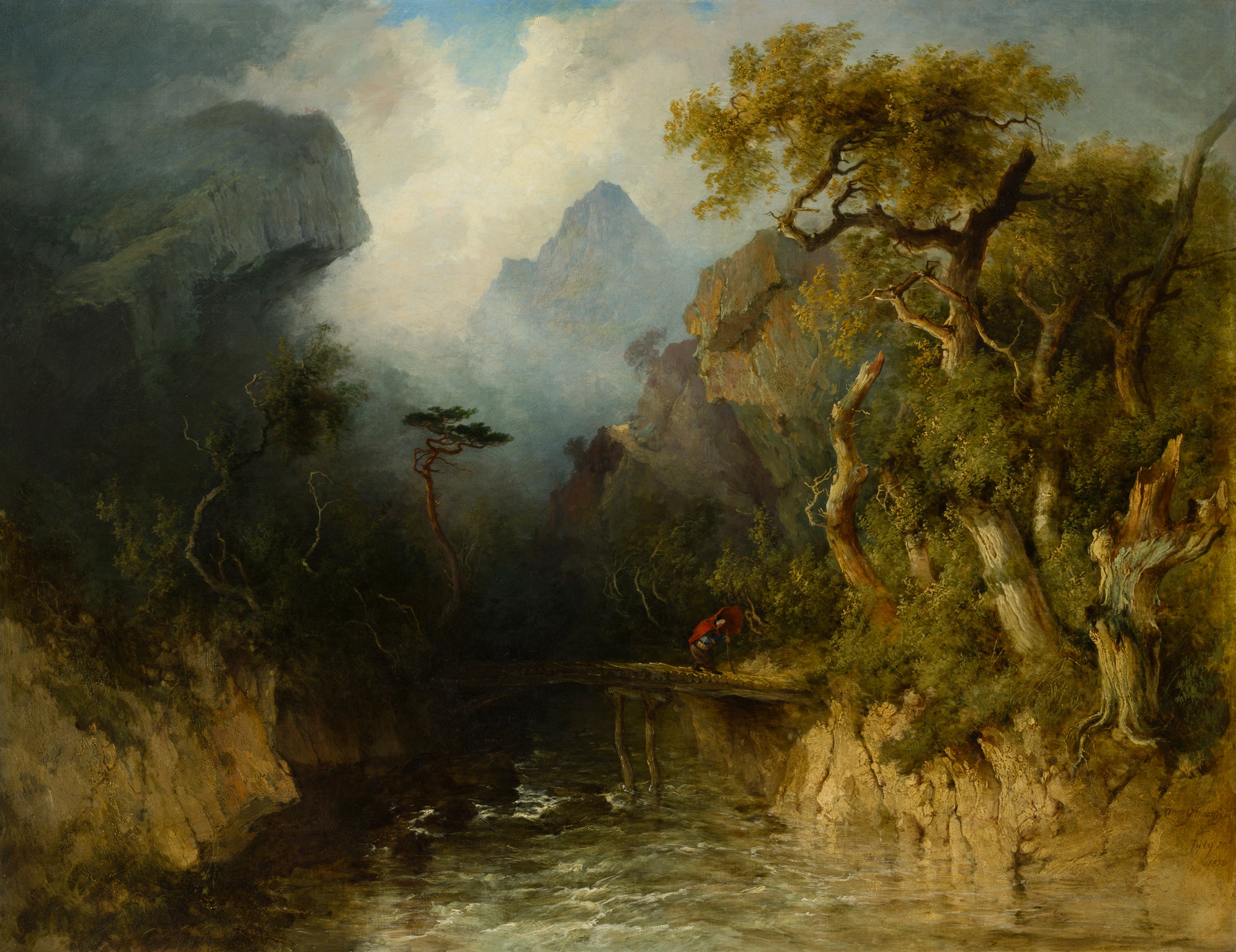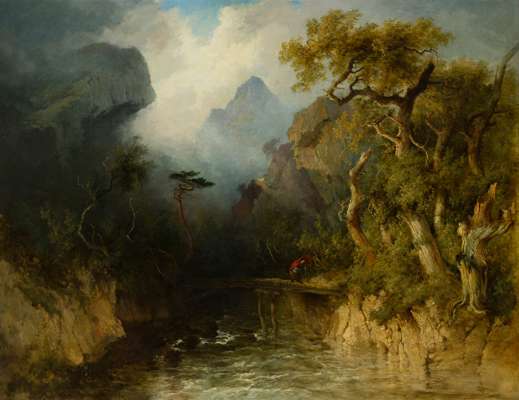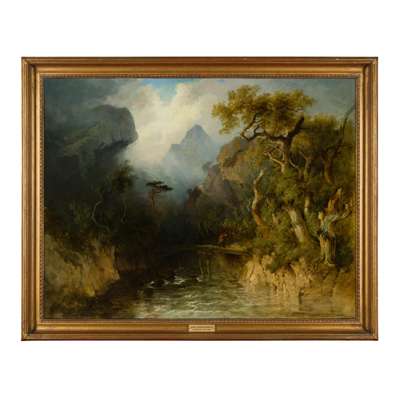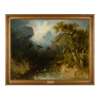
Lot 111

ANNE GIBSON NASMYTH (SCOTTISH 1798-1874)
CROSSING THE BRIDGE IN A STORM








Scottish Paintings & Sculpture
Auction: Evening Sale: 08 December 2022 | From 18:00
Description
Signed and dated July 20th 1836, oil on canvas
Dimensions
71cm x 91cm (28in x 36in)
Provenance
Provenance: Careston Castle, Brechin, Angus
Footnote
Signed and dated works by the Nasmyth daughters appear on the market infrequently, and Anne Gibson Nasmyth’s (1798-1874) paintings are particularly rare: she was less prolific than her sisters, with fewer than twenty works attributed to her. Nevertheless, she is recorded as having exhibited at the Royal Scottish Academy, Royal Society of British Artists, Royal Scottish Academy and British Institution, and her paintings reveal her to be a highly accomplished landscape artist with a predilection for stormy highland scenes. Anne joined her brother Patrick in London in 1829, where she and her sister Elizabeth established a further Nasmyth school of art at 9 Devonshire Street, Portland Place.
Raised in a uniquely artistic and intellectual environment, it is of little surprise that the Nasmyth children understood the principles of drawing and painting. It is remarkable, however, that so many possessed natural artistic talent. Of his eleven children at least eight were gifted artists: his six eldest daughters Jane, Barbara, Margaret, Elizabeth, Anne and Charlotte, and his eldest son Patrick and younger son James. James observed that ‘my father’s object was to render each and every one of his children…independent…accordingly, he sedulously kept up the attention of his daughters to fine art. He set on foot drawing classes…managed by his six daughters, superintended by himself.’
The Nasmyth children benefited from intimate access to their father’s paintings and expansive drawings portfolio, including many early copies of Old Masters made at the Trustees Academy in Edinburgh and Allan Ramsay’s studio. It also contained numerous landscape sketches observed from life, overwhelmingly portraying England and Scotland. Only a few European sketches survive, likely made during Nasmyth’s Italian studies, but charmingly these continental landscapes appear to have been pored over by the Nasmyth children, and can be seen to have inspired passages in their mature paintings. They all went on to paint landscapes almost exclusively, with each adopting a personal interpretation of their father’s style.







